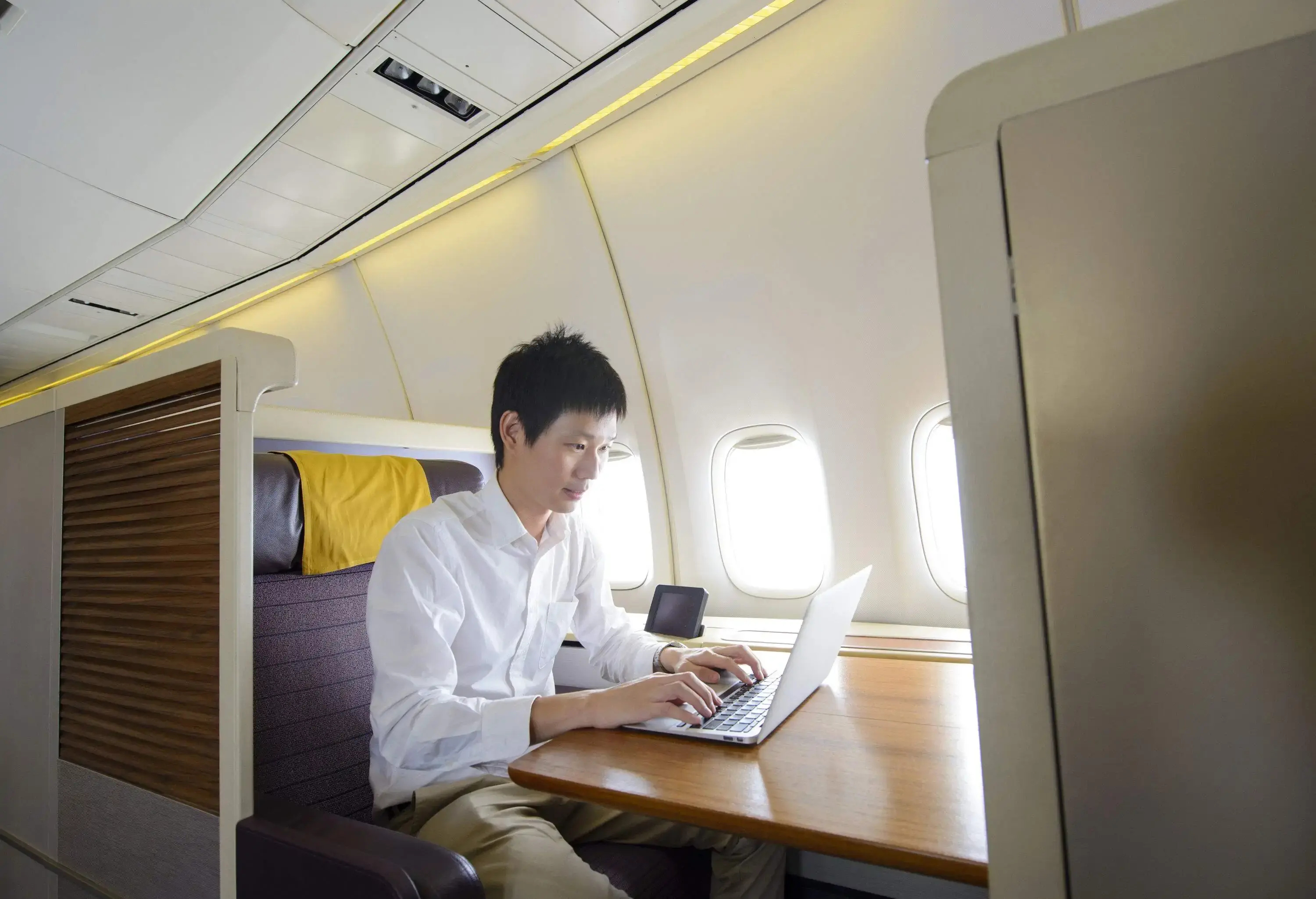Millions of thrill seekers, college students and budget travelers seeking a challenging and rewarding trip have strapped on a backpack and hit the open road. For many worldly travelers, going on a backpacking adventure is a right of passage and a badge of honor treasured just as much as passport stamps.
Attempting a backpacking trip might seem overwhelming, but with proper planning and preparation, first-time backpackers can coordinate the ultimate backpacking adventure.
These tips will transform you from a novice to an expert in no time. Who knows? Backpacking might become your preferred mode of travel!
Where to go
There are several factors to consider when deciding where to go
- Budget: How much money do you have to spend on this trip? Research how much it will cost, including budgeting for accommodations, food and incidentals. Staying at a hostel? Check out our first-timer’s guide to staying at a hostel.
- Time: How much time do you have off from school or work? If you’re hiking on a trail, will you hike in a loop or from point to point? Your itinerary should align with the time you have for the trip, adding an extra day or two for delays.
- Environment: The climate and terrain of your destination should be important considerations. Research the environmental conditions like altitude, air pollution and humidity at your destination that may contribute to your fitness level and specific health concerns.
- Skill Level: Are you a couch potato on a budget or a fitness buff looking for a challenge during your next trip. Depending on your destination, trail type and goals, aim to hike three to 10 miles per day.
- Number of Travelers: Traveling solo or with friends? The answer impacts your itinerary, budget and how you get from point A to point B.
- Special considerations: Do you have any health restrictions or are you traveling with pets? Prior to your trip, consult with your physician to identify your healthcare needs at your destination.
When to go
Now that you’ve narrowed down the choice of where you want to go, consider the following:
- The time of year at your destination: Going during shoulder season can mean lower airfare and accommodation fees and heading out during low season may mean fewer crowds. Similarly, timing your travels to festivals may enhance your enjoyment of the destination, but arriving at a new destination on a major national holiday might mean closed restaurants, banks and museums.
- The weather at your destination: Be mindful of the weather and season. For example, fall is perfect for hiking the Appalachian Trail and fall and spring are great times to backpack across Europe. You’ll also want to avoid harsh winters in Siberia and monsoon season in Asia.
How to choose a backpack
There are many things to consider when choosing the perfect backpack for you.
- Trip Length: The length of your trip correlates to how big a backpack you should consider. Here is a general guide for capacity, which is typically measured in liters:
1-3 Days: 35 to 50 liters
3-5 Days: 50 to 80 liters (fits about a week’s worth of clothes in the summer; about 3-4 nights in the winter)
7 Days or More: 70 liters or more
- Body Type: Backpacks come in various sizes and many are adjustable. Most of the weight load should be carried on your hips, not your shoulders or lumbar. Your torso length is the most important measurement to take when selecting a backpack and adjusting the backpack to your body. To measure your torso: have a friend or store clerk measure the distance between the top of your hips to your C7 vertebrae, located near the base of your neck. In addition to measuring the torso, also measure and consider waist size, as your hips should support the majority of a backpack’s weight.
- Backpack Frame: Backpacks come in a variety of shapes, sizes and styles. Quality backpacks have internal frames, external frames or no frame at all. The best options for serious backpackers are those with internal or external frames. Internal frames contour to the back and are designed to keep backpackers stable on uneven terrain and transfers weight load to the hips. External frames are designed with extra support to help backpackers carry heavy loads. They offer good ventilation and lots of pockets and compartments for organizing your stuff.
- Backpack Features: Many backpacks are top loading and close with a drawstring and zippered top lid that is often detachable, while others zip up along the side or front to allow for side loading. Some backpacks feature a sleeping bag compartment or straps for securing a sleeping bag to the pack.
- Shop Around: Try on any backpack before buying it. Go to a store and fill it up, walk around the store for a while and maybe do a bit of shopping with it on to make sure you have the right fit. Once you know which backpack works best, you can search online for the best deals.
How to prepare for the trip
Even the most experienced traveler should spend some time preparing,
- Research the destination through guidebooks, travel websites and friends who have backpacked before.
- Save money by brushing up on exchange rates and knowing what an average meal costs so you don’t get ripped off.
- Plan ahead but don’t over-plan. Part of the allure of backpacking is spontaneity.
- Start walking a few months before your trip to get used to the longer distances.
- To get used to carrying a heavy backpack, strap your backpack on and add some weight. Then, walk around your neighborhood or take a hike.
- Check with your doctor before you embark, particularly if you have medical conditions.
- Get good shoes. Better yet, buy two good pairs in case one pair gets wet during your travels. Break the shoes in before the trip.
- Pack light. One way to pack light is to buy and pack multi-function items like pants that turn into shorts.
What to pack
First time backpackers tend to over pack. Remember, you are carrying the backpack non-stop for long periods of time. Even trekking the cobblestone streets from a train station to the hostel of a quaint European town takes effort. Walking a couple of blocks with 30 pounds on your back may surprise some travelers at how strenuous it can be.
Your destination and the length of your trip largely determine your packing list. This list runs the gamut from weekends in the backcountry to backpacking through South America and Asia.
- Backpack
- Daypack – a smaller bag to use once at your destination for small items like your camera and essentials.
- Pack cover – to protect the backpack and its straps in transit and during inclement weather.
- Clothing – depending on the destination and season, this can include jacket, pants, shorts, wicking short- and long-sleeve T-shirts (synthetic or wool are best), wicking underwear, gloves, a hat. Dressing in layers is key!
- Map, compass, and/or GPS device
- Sunscreen and lip balm
- Sunglasses
- Flashlight with batteries
- First aid supplies
- Tent and tent pole repair sleeve
- Sleeping bag (or sleeping bag liner for overnight train and ship travel)
- Pillow (inflatable pillows are more space saving)
- Whistle
- Multifunctional watch with altimeter
- Trekking poles and/or ice axe
- Hat
- Insect repellant
- Boots or shoes suited to terrain
- Socks (synthetic or wool)
- Sandals (for walking in water, wearing at camp or wear in the hostel communal shower)
- Camera and memory cards
- Binoculars
- Permits and/or visas (depending on destination)
- Guidebook
- Notebook, pen and pencil
- Credit cards and cash (stashed in different places)
- Passport and money belt
- Medications (see our traveling with medication guide)
- Matches or lighter and fire starter for emergency (note: not allowed in carry-on luggage)
- Knife (note: not allowed in carry-on luggage)
- Snacks / supply of food / cook set including dishes and utensils
- Water bottles and/or hydration system, water filters
- Emergency shelter like a tarp or reflective blanket
- Rainwear
- Toilet paper
- Quick dry towel
- Hand sanitizer and/or wet wipes
- Toiletry kit
- Cell or satellite phone
- Copy of important documents (one for you and one for a friend at home)
- Trip itinerary (one for you and one for a friend at home)
- Contact information for your country’s embassy/consulate and family back home
- Plastic baggies to securely seal liquids and perishables
How to Pack a Backpack
Packing a backpack is not the same as packing a suitcase. Here are some savvy packing tips:
- Be considerate: Before tossing everything into your backpack, lay everything out that you want to take. Then, eliminate half of those items.
- Bag it: Pack your things in compression bags or plastic zip-top bags to conserve space and keep things organized.
- Distribute weight evenly: If you have an external frame backpack, pack the heaviest items on the top and the lightest on the bottom. If you have an internal frame backpack, pack the lightest items on the bottom, the heaviest items in the middle and close to your back, and the middle weight stuff on the top and on the outside of the backpack.
- Easy Access: Remember to put things you may need in easily accessible areas. Toiletries and things you only use when stationary can be put deep in the bag while rain gear and snacks you may need while out and about should be near openings or placed in pockets. Keep all electronics and liquids near an opening when going to the airport. You don’t want to end up emptying your bag at the security line.
- Strap it together: Be sure to adjust the backpack to the contours of your body and to accommodate the contents of the backpack. Put the backpack on and adjust the shoulder straps and waist straps. Then, adjust the load lifter straps (the straps stitched onto the top of the shoulder straps). Aim for a snug, 45-degree angle between the shoulder straps and the pack. This adjustment will keep the pack from pulling away from your body. Finally, snap the sternum strap (the strap that runs across your mid-chest and connects the shoulder straps together) and snugly adjust to your comfort level. This skinny strap might appear to not have purpose, but it actually helps with stability and prevents you from becoming off-balance if you have to make a sudden move.
- Don’t sweat it: Sometimes it’s better to under-pack. While it is important to pack the essentials, consider leaving an extra outfit behind. You can always pick up a souvenir T-shirt along the way or restock on routine items like shampoo and toothpaste.
How to thrive a backpacking trip
These tips and tricks will help you have the best. backpacking trip. ever.
- Let your family or a close friend know where you are going. Share your itinerary and leave a copy of your important documents with them, in case of theft or an emergency at home or abroad.
- Leave your valuables at home. Just carry the basics with you and pick up some new treasures along the way. It’s a good idea to divide up your cash and credit cards and store in two places – stash some in your backpack and the rest in your daypack or, even better, in a money belt or money pouch.
- Pack light. We can’t emphasize this enough.
- Get up early to avoid the heat of the day along with the crowds at popular spots.
- Stay safe. Don’t flash your cash, fancy camera or cellphone around. The backpack is already a giveaway that you are a tourist. Remain alert and keep your eyes and hands on your bags. Be wary of your possessions in hostels and on trains (padlocking your bags to the luggage rack if you’re on an overnight train is not over-reacting in some parts of the world).
- Use common sense and trust your instincts. If you find yourself in an uncomfortable situation, be proactive.
- Recognize that everything may not go according to plan. You are likely to get lost, you might get sick after eating some questionable street food, your backpack shoulder strap might break or your backpack might be stolen. When something goes wrong, don’t panic. Plan ahead for these scenarios, so you can have a course of action. For help with a medical emergency, here is how to find a doctor abroad. Make sure you have the contact information for the nearest U.S. embassy or consulate where you are going. Consular duty personnel are available for emergency assistance 24 hours a day, 7 days a week at U.S. embassies, consulates and consular agencies overseas. Contact information for U.S. embassies, consulates and consular agencies overseas may be found in the State Department’s Country Specific Information
- Be flexible. One of the joys of backpacking is having the ability to venture off the itinerary to explore unexpected places with new friends met at hostels or bed and breakfasts along the way. You might also come across last minute travel sales and deals too good to pass up. Don’t let these opportunities pass you by, as this is part of the backpacking experience.
- Have fun!
(Main Image: Jhong Dizon, Shooter via Flickr CC BY 2.0)





